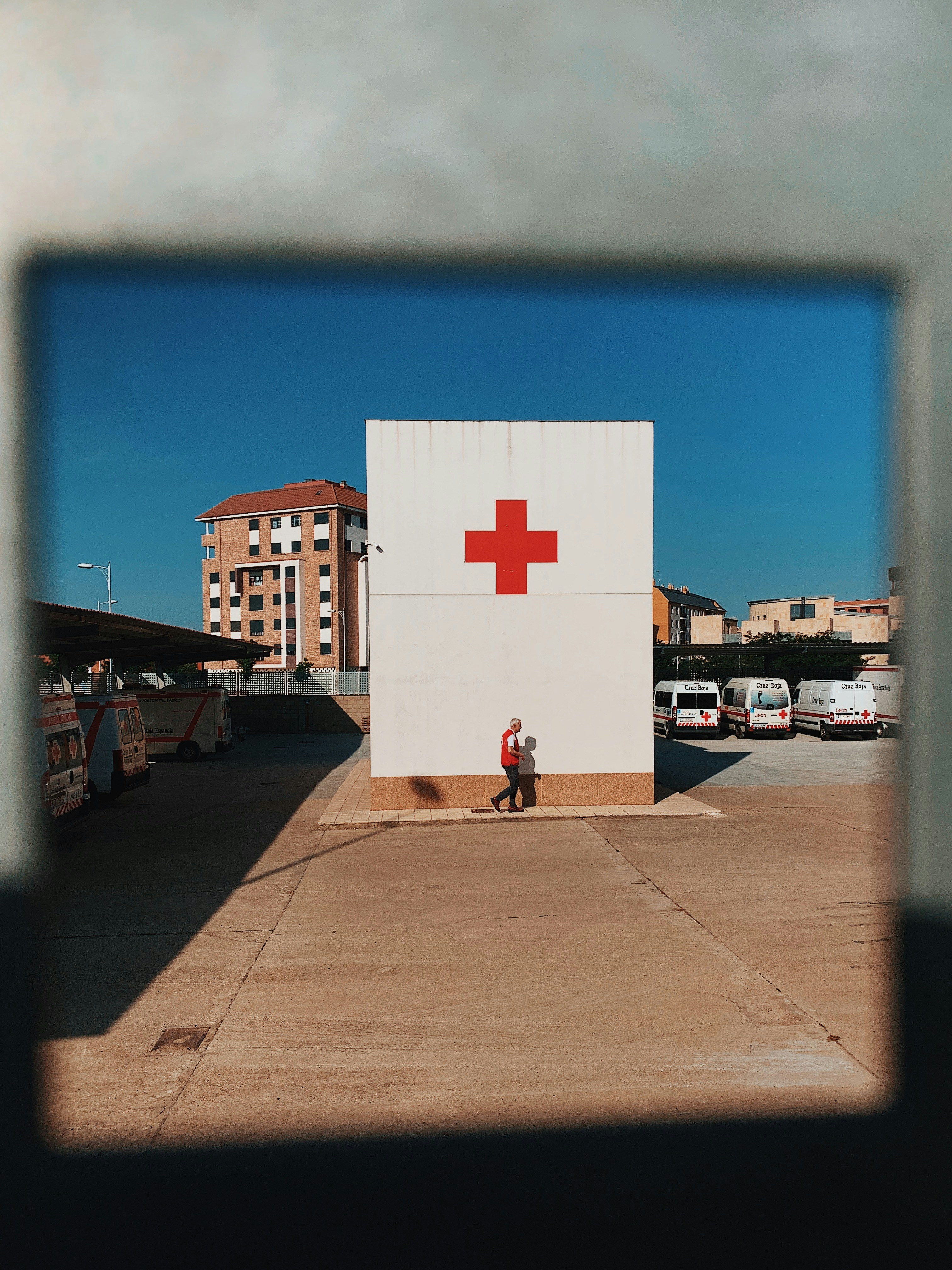So you’ve found yourself in a situation where someone has gotten a cut or wound, and you’re not quite sure what to do. Don’t worry, we’ve got you covered! In this article, we’ll walk you through some basic first aid skills for treating cuts and wounds. Whether it’s a small scrape or a deeper gash, these tips will help you confidently handle the situation and provide the necessary care. So let’s jump right in and equip you with the knowledge you need to handle cuts and wounds like a pro!
Understanding The Types Of Wounds
When it comes to treating cuts and wounds, it is important to have a basic understanding of the different types of wounds that can occur. This knowledge can help you determine the appropriate first aid measures to take. There are several categories of wounds, including minor wounds, serious wounds, puncture wounds, and major lacerations.
Minor Wounds
Minor wounds are generally superficial and do not penetrate deep into the skin. Examples of minor wounds include small cuts, scrapes, and abrasions. While these wounds may not be life-threatening, they still require proper care to prevent infection and promote healing.
Serious Wounds
Serious wounds, on the other hand, are deeper and may involve underlying tissue, muscle, or even bones. These types of wounds typically result from accidents, trauma, or severe lacerations. It is important to approach serious wounds with caution and seek immediate medical attention.
Puncture Wounds
Puncture wounds occur when a sharp object, such as a nail or thorn, penetrates the skin. These wounds can be deceiving as they often appear small, but they can cause significant damage and carry a high risk of infection. Puncture wounds should be promptly cleaned and monitored for any signs of infection.
Major Lacerations
Major lacerations are deep, open wounds that require immediate medical attention. These wounds may involve severe bleeding and can be caused by accidents or trauma. It is important to apply pressure to control bleeding and seek professional medical treatment as soon as possible.
Emergency Response to Cuts and Wounds
In the event of a cut or wound, it is crucial to respond quickly and appropriately. Here are some fundamental steps to take in an emergency situation.
Assessing the Situation
Before jumping into action, take a moment to assess the severity of the wound. Is it a minor injury or something more serious? Understanding the extent of the injury will help you determine the necessary course of action.
Calling for Help
If the wound appears to be serious or if there is excessive bleeding, it is important to call for medical assistance immediately. Dial emergency services or ask someone nearby to make the call while you focus on providing initial treatment.
Basic Safety Measures
Ensure the safety of both yourself and the injured person. If there are any potential dangers, such as traffic or hazardous materials, move to a safer location. Always prioritize your own safety before assisting others.
Cleaning of the Wound
Proper cleaning of a wound is essential to prevent infection and promote healing. Here are some important steps to follow when cleaning a wound.
Use of Soap and Water
For minor wounds, washing the wound gently with mild soap and running water is usually sufficient. This helps remove dirt, debris, and any bacteria that may have entered the wound. Remember to wash your hands thoroughly before and after cleaning the wound to prevent cross-contamination.
Cleaning with Hydrogen Peroxide or Iodine
In some cases, additional disinfection may be necessary, especially for deeper wounds or those with a higher risk of infection. Hydrogen peroxide or an iodine solution can be used to clean the wound, but it is important to follow the directions and dilution ratios specified on the packaging.
Identifying and Dealing with Foreign Objects
In some instances, there may be a foreign object lodged in the wound, such as a piece of glass or a splinter. It is important to identify and remove these objects to prevent further damage and reduce the risk of infection. Use sterilized tweezers or seek professional medical assistance if you are unsure or uncomfortable with removing the object yourself.
Stopping Bleeding
Controlling bleeding is a critical step in treating cuts and wounds. Here are some techniques to help stop or minimize bleeding.
Pressure Application to Wound
Applying direct pressure to the wound with a clean cloth or sterile gauze can help stop bleeding. Maintain steady pressure for several minutes until the bleeding subsides. If the cloth becomes soaked, do not remove it. Instead, add another layer on top and continue applying pressure.
Elevation of the Injured Area
Raising the injured area above the level of the heart can help reduce blood flow to the wound, thus slowing down the bleeding. If possible, elevate the affected limb or position the person in a way that promotes blood flow away from the wound.
The Use of Bandages
Once bleeding has been controlled, it is important to protect the wound with a suitable bandage. Use sterile adhesive bandages or gauze pads to cover the wound. Secure the bandage in place with medical tape or adhesive strips. Ensure the bandage is snug but not too tight to restrict circulation.
Dressing the Wound
Proper dressing of a wound helps promote healing and prevent infection. Here are some key aspects of dressing a wound.
Choosing the Right Size Bandage
Select a bandage or dressing that is appropriate for the size and location of the wound. Too small of a bandage may not provide adequate coverage, while one that is too large may not stick properly or cause discomfort. Consider the shape and depth of the wound when choosing the right size bandage.
Applying the Dressing
Begin by cleaning the wound and surrounding area as previously mentioned. Once the wound is clean and dry, carefully place the dressing over the wound, ensuring full coverage. Secure the dressing in place with a suitable adhesive or bandage wrap. It is important to avoid putting excessive pressure on the wound while dressing it.
Changing the Dressing
Regularly change the dressing on the wound to maintain cleanliness and facilitate proper healing. The frequency of dressing changes will depend on the nature and severity of the wound. Follow any instructions provided by medical professionals and be vigilant for any signs of infection or deterioration.
Preventing Infection
Preventing infection is paramount when treating cuts and wounds. Follow these measures to minimize the risk of infection.
Cleaning Wound Regularly
Regularly clean the wound using the methods described earlier, especially if there is any sign of dirt, drainage, or pus. Keeping the wound clean and free from debris helps prevent the growth of bacteria and reduces the risk of infection.
Applying Antiseptic
Applying an antiseptic solution or ointment to the wound can further reduce the risk of infection. Antiseptics, such as hydrogen peroxide or povidone-iodine, help kill bacteria and keep the wound sterile. Follow the instructions provided with the antiseptic and consult a healthcare professional if you have any concerns.
Recognizing Signs of Infection
It is important to monitor the wound for any signs of infection. These may include increased redness, swelling, warmth, or the presence of pus. If you notice any of these signs or if the wound appears to be getting worse despite proper care, seek medical attention promptly. Infections can escalate quickly and may require professional treatment.
Administering Over-The-Counter Medication
In certain situations, over-the-counter medication can be beneficial in treating cuts and wounds. Here are a few examples of when medication may be appropriate.
Using Aspirin to Thin Blood
Aspirin, when taken as directed by a healthcare professional, can help thin the blood and reduce the risk of blood clots. This can be particularly beneficial for individuals with a higher risk of cardiovascular problems or for wounds that involve deeper tissue.
Antibiotics for Infection
Certain topical antibiotics, such as bacitracin or neomycin, can be applied to wounds to prevent or treat infection. These medications help kill bacteria and promote healing. However, it is always advisable to consult a healthcare professional before using any medications, especially if there are pre-existing medical conditions or concerns.
Pain Relievers
Over-the-counter pain relievers, such as acetaminophen or ibuprofen, can help alleviate pain and discomfort associated with cuts and wounds. Follow the recommended dosage instructions and consult a healthcare professional if the pain persists or worsens.
Recognizing Wounds that Require Professional Medical Attention
While basic first aid skills are essential, there are situations where wounds require immediate professional medical attention. Here are a few signs that indicate the need for advanced care.
Deep Wounds
Deep wounds that involve underlying tissue, muscle, or bone typically require stitches or a surgical intervention to promote proper healing. Professional medical assessment and treatment are necessary to minimize the risk of complications.
Wounds with Foreign Objects
If a wound has a visible foreign object, such as a piece of metal or glass, embedded within it, it is best to seek professional medical help. Attempting to remove the object yourself may cause further damage or increase the risk of infection.
Infected Wounds
Wounds that show signs of infection, such as redness, swelling, warmth, pus, or increasing pain, require medical attention. Infections can spread rapidly and may lead to more serious complications if left untreated.
Animal or Human Bites
Animal or human bites often result in puncture wounds that can easily become infected due to the bacteria present in the mouths of animals and humans. These wounds should be evaluated by a healthcare professional to minimize the risk of infection and ensure appropriate treatment.
Basic Knot and Sling Skills for Major Wounds
In situations where major wounds occur, it is crucial to have basic knot and sling skills to provide temporary stabilization and prevent further injury.
Creating a Simple Sling
A sling can be made using a triangular bandage or a large piece of cloth. The sling helps support and immobilize an injured arm or shoulder. Follow illustrated instructions or consult a first aid manual to learn the proper techniques for creating a sling.
Using a Tourniquet
A tourniquet can be a life-saving measure in cases of severe bleeding from an extremity. However, it should only be used as a last resort and when professional medical help is not accessible within a reasonable time frame. Proper training and knowledge of the correct application of a tourniquet are essential to prevent further damage.
Applying Pressure Bandages
Pressure bandages are useful for controlling bleeding and promoting clotting. These bandages apply consistent pressure to the wound, helping to stem the flow of blood. It is important to learn the correct techniques for applying pressure bandages to avoid excessive pressure or displacement of the wound.
Aftercare and Healing of Wounds
Once initial treatment has been administered, proper aftercare is essential for the healing of wounds. Here are some important aspects to consider during the healing process.
Proper Rest and Hydration
Resting the injured area and ensuring adequate hydration are crucial for optimal healing. By giving your body the time and resources it needs to repair itself, you can promote faster healing and reduce the risk of complications.
Re-dressing and Cleaning
Regularly re-dressing and cleaning the wound is crucial to maintain a sterile environment and prevent infection. Follow the guidance provided by healthcare professionals and ensure proper hygiene practices during the re-dressing process.
Recognizing Normal Healing Patterns
During the healing process, it is important to be aware of the normal signs of healing. These may include mild swelling, redness, and a moderate amount of clear or pale yellow discharge. However, if there are any concerns or if the wound appears to be worsening, seek professional medical advice.
Remember, while these guidelines provide a comprehensive overview of basic first aid skills for treating cuts and wounds, it is always advisable to consult a healthcare professional for personalized advice and treatment. Your safety and well-being should be the top priority, and seeking appropriate medical assistance when necessary is crucial for proper wound care.



